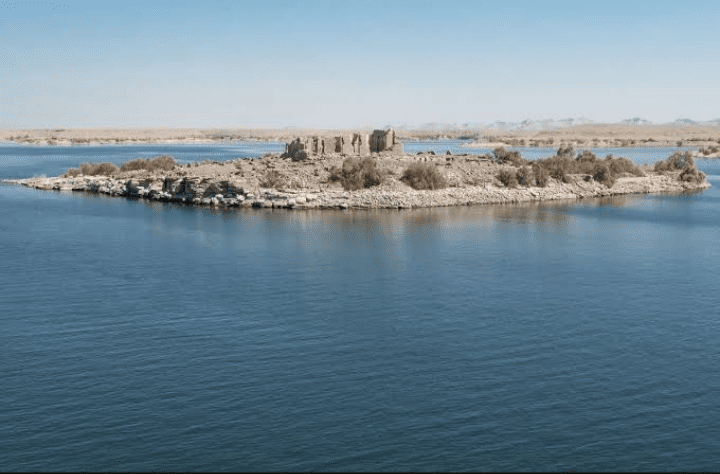Africa’s waterways hold some of the most magnificent and diverse landscapes on the continent. Their shores are hubs of human activity, where communities have thrived for generations, harnessing the lakes’ bounties for sustenance and trade. Yet, these bodies of water also face environmental challenges, requiring careful stewardship to preserve their ecological balance. We take a look at 7 of the biggest lakes in Africa:
Read also: African fashion: The unique tapestry of heritage and creativity
1. Lake Victoria
Lake Victoria, situated in East Africa, stands as the largest lake on the continent and the second-largest freshwater lake globally. Spanning approximately 68,800 square kilometres (26,600 square miles), its expansive waters border three East African nations: Uganda, Tanzania, and Kenya. This colossal lake is not merely a geographical landmark; it serves as a vital lifeline for the region’s inhabitants. Lake Victoria plays a central role in sustaining local economies, particularly through fishing, agriculture, and transportation. Its rich aquatic biodiversity includes unique cichlid fish species, and it is essential for supporting the livelihoods of millions of people living along its shores. Despite the challenges it faces, such as pollution and overfishing, Lake Victoria remains a symbol of both natural wonder and human resilience in East Africa.
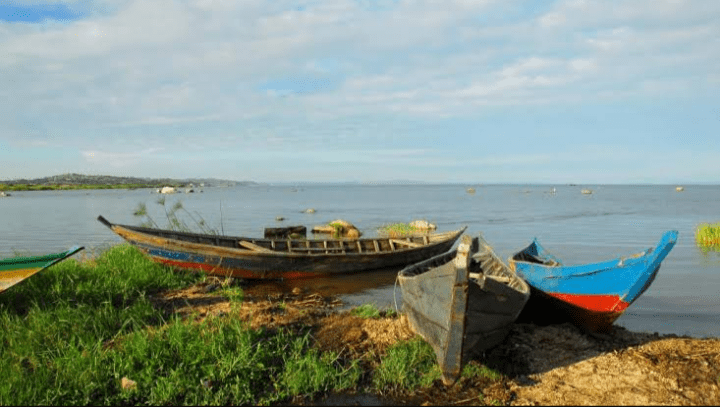
2. Lake Malawi (lake nyasa)
Lake Malawi, also known as Lake Nyasa, graces the East African Rift Valley with its shimmering beauty and ecological significance. The third-largest lake in Africa spans an impressive 29,600 square kilometers (11,400 square miles). It is shared by three countries: Malawi, Mozambique, and Tanzania. This freshwater gem has crystal-clear waters and stunning scenery, surrounded by lush vegetation and dramatic landscapes. Lake Malawi supports a rich and diverse array of aquatic life, particularly its endemic cichlid fish species. The lake’s waters have been a source of sustenance and livelihoods for generations of communities living along its shores. Lake Malawi’s ecological importance, striking beauty, and cultural significance make it a true treasure of East Africa.
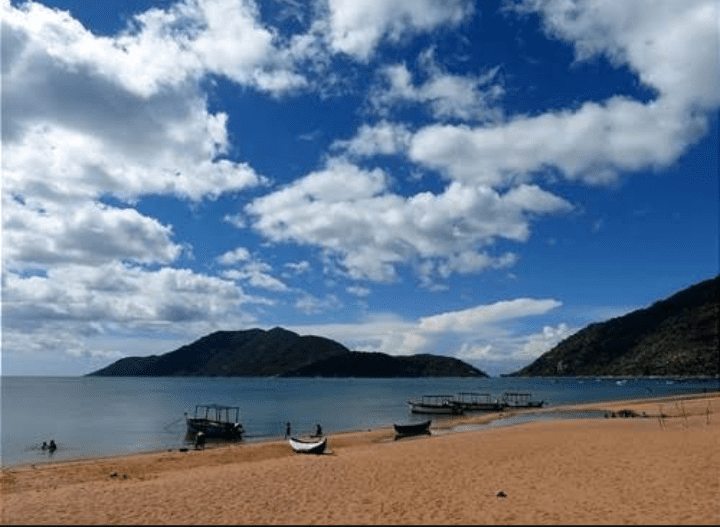
3. Lake Turkana
Located in the Kenyan Rift Valley, it is a captivating natural wonder and holds the distinction of being the world’s largest desert lake. Spanning over 6,400 square kilometres (2,480 square miles), it is an essential geographical feature of East Africa. Also known as the “Jade Sea” for its striking blue-green hues, Lake Turkana‘s unique beauty is matches its ecological importance. Its waters teem with diverse fish species, and the surrounding region is rich in fossil discoveries, offering valuable insights into human evolution. The lake serves as a lifeline for local communities, supporting their livelihoods through fishing and agriculture. Despite its remote location, Lake Turkana is a testament to the resilience of life in extreme environments and a symbol of the interplay between nature and humanity in the East African landscape.
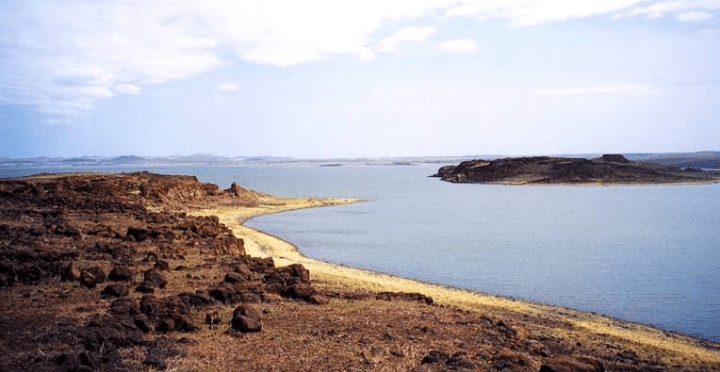
4. Lake Albert
Lake Albert, nestled in the heart of East Africa, is a captivating freshwater lake shared by two countries, Uganda and the Democratic Republic of Congo (DRC). Covering approximately 5,590 square kilometers (2,150 square miles), it graces the East African Rift Valley with its presence. Lake Albert’s serene waters border lush landscapes, making it an area of rich biodiversity. The lake is home to various fish species, and its surrounding wetlands provide critical habitats for numerous bird species.
The lake plays a pivotal role in supporting the livelihoods of communities living along its shores, particularly through fishing and agriculture. It is a source of sustenance and economic activity, contributing to the local economy and culture. This remarkable lake is also part of the larger Albertine Rift, a region celebrated for its ecological significance and unique flora and fauna. Lake Albert stands as a testament to the beauty and ecological importance of Africa’s freshwater lakes.

5. Lake Chad
Lake Chad, a prominent feature of the African continent, is a remarkable body of water that has undergone substantial changes over the years. Once one of the largest lakes in Africa, it has seen significant reduction in size due to climate fluctuations and human activities. Located in the Sahel region of Africa, it borders four countries: Chad, Cameroon, Niger, and Nigeria. Lake Chad remains an emblematic symbol of the complex relationship between nature and human societies in the African context.
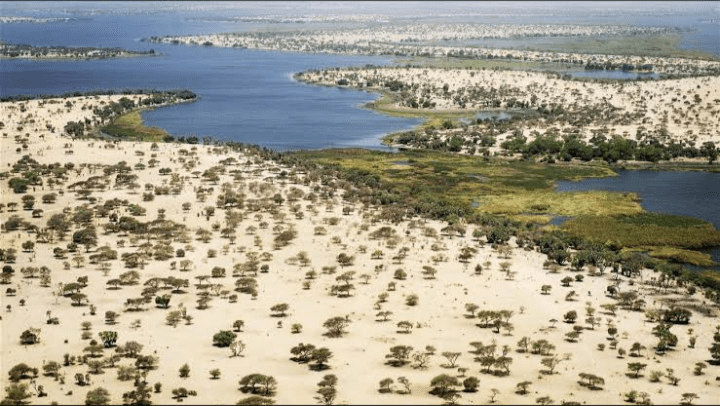
6. Lake Edward
Lake Edward, situated in the heart of Africa, is one of the Great Lakes of the East African Rift Valley. Straddling the border between Uganda and the Democratic Republic of Congo (DRC), it covers an area of 2,325 square kilometers. Lake Edward, named after Prince Albert Edward, is known for its stunning natural beauty and ecological significance.
Lake Edward is within Virunga National Park surrounded by lush landscapes, volcanic mountains, and diverse wildlife. It supports various fish species and is home to iconic African animals like mountain gorillas. The lake is crucial for local communities through fishing and is integral to the region’s ecosystem.
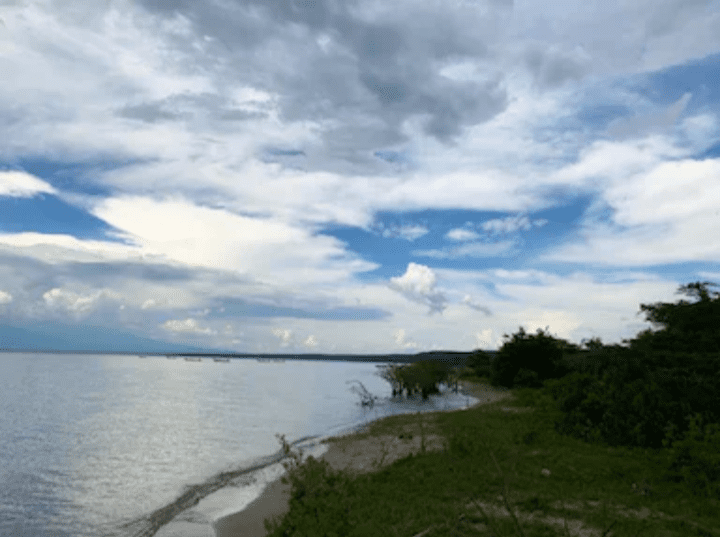
7. Lake Nasser
Lake Nasser, situated in northeastern Africa, is a man-made reservoir that extends across the border regions of Egypt and Sudan. It was created as a result of the construction of the Aswan High Dam, a monumental engineering project completed in the 1960s. Covering a staggering surface area of approximately 5,250 square kilometers (2,030 square miles), Lake Nasser ranks as one of the largest artificial lakes globally and a defining feature of the Nile River.
The dam was built to control the annual flooding of the Nile, provide a stable water supply for irrigation, and generate hydroelectric power. It has played a pivotal role in supporting agriculture, electricity production, and economic development in both Egypt and Sudan.
The lake’s shores host archaeological treasures, such as ancient temples and monuments moved to higher ground to protect them from submersion. Lake Nasser serves as a crucial resource for Egypt and Sudan, illustrating the intricate connection between human societies, water management, and the environment in this African region.
